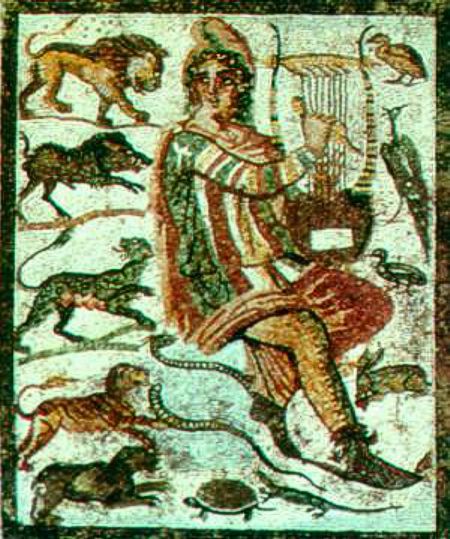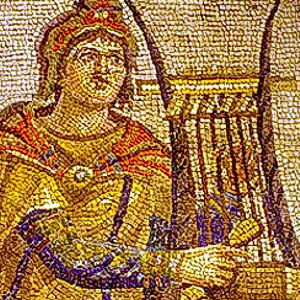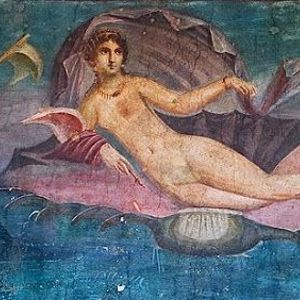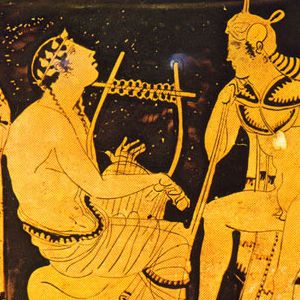The Hymns of Orpheus
in Renaissance Astrological Magic



Orpheus was a legendary poet, philosopher and musician of Thrace to whom the Orphic Mysteries were attributed. Orpheus was such a renowned musician that animals, burds and even trees and rivers were affected and could be controlled by his playing of the lyre. Orpheus' attempt to rescue his wife, Eurydice, from Hades is a key myth and has echoes in the Orphic Mysteries which also focused on death and resurrection.
Many works and poems were attributed to Orpheus and comprised the Orphic corpus. Of these the most famous are the 87 Hymns of Orpheus, composed in honor of various gods, goddesses, winds and other personified natural forces. The translations on the Renaissance Astrology website were made by the 18th century English Neo-Platonist Thomas Taylor. Here are the Orphic Hymns to Saturn and Jupiter and Mars and the Sun and Venus and Mercury and the Moon.

There are three basic elements that can be used to create astrological talismans: astrological timing, known as electional astrology, consecration or invocation of the celestial spirits and the design and materials of the talisman. All of these contribute to the strength and efficacy of the talisman, but in my view, the astrological timing and consecration are the most important.
The election of times for the consecration of talismans requires a knowledge of traditional astrology and we look to traditional sources as well for invocations of celestial spirits. We can certainly invoke celestial spirits without creating talismans, but again in my practice, I would always elect an appropriate time when the particular celestial factor, be it a planet, fixed star, constellation, Nansion of the Moon, etc., is dignified and unafflicted.
There are variety of different traditional sources that include invocations and instructions for invocations of celestial spirits. Along with the Hymns of Orpheus, the medieval astrological
grimoire Picatrix is a key source. Picatrix says,
"When you desire to speak with any planet or ask it for anything that you need, first and above all else, purify your will and your faith in God, and beware especially that you believe in no other; then cleanse your body and your garments of all dirt. Then determine the nature of the planet to which your petition corresponds. When you wish to address the planet to which your petition properly belongs, dress in clothing dyed the color of that planet, and suffumigate yourself with its suffumigation, and pray its prayer. Do all this when the planet is established in its dignities and called superior in its dispositions, for by observing these things, what you desire will come to pass."
Picatrix Bk III, ch. 7
The Picatrix particularly emphasizes the importance of correct astrological timing for invocation,
"The most important point (of which you should take diligent care) is that you should see that the planet is in good condition and quality, and remote from infortunes, because when he is like this, he is like a man of good will and a lively heart and a great and ample mind, and if another person seeks something from him, he cannot find it in himself to deny the petitioner. When the same planet is retrograde in his course or cadent from the angles, he is like a man full of anger and ill will, who is most ready to deny a petition."
Picatrix Bk III, ch. 7
This characterization of the planets, such that we can see their personalities and relate to them as persons, resonates strongly with me and is the foundation of my approach to astrological magic. Thus in my practice making appropriate talisman and invoocation elections is key. I teach how to elect appropriate times for the entire range of traditional astrological talismans in my Astrological Magic Course.
So having found an astrological appproriate time for our consecration or invocation, how do we proceed? Picatrix gives us the basic framework, we suffumigate and we call upon the planet, fixed star, etc. What is suffumigation? This is burning incense and if we are making a talisman moving the talisman back and forth through the smoke of the incense. Our traditional sources have many different lists of incense appropriate for each planet, fixed star, Mansion of the Moon, etc. But in my view it is more important to use some kind of incense as opposed to not being able to find the exact incense specified in the source and thus giving up and not using any incense at all. I do so many consecrations and invocations that I tend to use Japanese Buddhist temple stick incense for everything, but of course the celestial spirits appreciate the extra effort of offering them the incense they prefer.
In addition, rather than the animal sacrifice called for by Picatrix and typical of the ancient world, my practice is to always light at least one candle. Again the celestial spirits appreciate you taking the time to use an appropriate color or number of candles. So the most basic framework of my astrological magic practice is, at an astrologically appropriate and auspicious time, to light candles and incense and to invoke the celestial spirit or spirits. We can use this as the consecration for the creation of a talisman, to reconsecrate talisman previous created and consecrated or to simply invoke the celestial spirits.

So what do we use to call upon, to invoke the celestial spirits? While I am fairly but not impracticably strict about astrological timing, I am much more flexible and free form about the ritual that accomplishes the consecration of a talisman or invocation of a celestial spirit. We can use many sources and even write our own invocations. Because we didn't have invocations from traditional sources for the fixed stars, Nigel Jackson and I wrote our own which you can see in my Fixed Star, Sign and Constellation Magic book. In my practice, the two key sources for planetary invocations are those of the Harranian Sabians in Book III, chapter 7 of Picatrix and the Hymns of Orpheus. Both of these invocations have many similarities, they call directly upon the planetary spirit by name and show honor to them by listing the qualities of the planet and celestial spirit and make various requests of the celestial spirit, appropriate to the qualities and things ruled by the planet.
Here is what the Renaissance sage Cornelius Agrippa says about invocation and the Hymns of Orpheus,
"Therefore in composing verses, and orations, for attracting the vertue of any Star, or Deity, you must diligently consider what vertues any Star contains, as also what effects, and operations, and to infer them in verses, by praising, extolling, amplifying, and setting forth those things which such a kind of Star is wont to cause by way of its influence, and by vilifying, and dispraising those things which it is wont to destroy, and hinder...
Besides, with the divers sorts of the names of the Stars, they command us to call upon them by the names of the Intelligencies, ruling over the Stars themselves, of which we shall speak more at large in their proper place.
They that desire further examples of these, let them search into the hymns of Orpheus, then which nothing is more efficatious in naturall Magick, if they together with their circumstances, which wise men know, be used according to a due harmony, with all attention."
Three Books of Occult Philosophy, Bk I, ch. 71